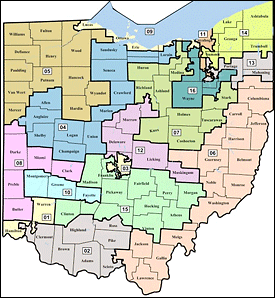Along with the presidential contest, Republicans are hoping to make the Ohio Senate race highly competitive and appear to be doing so. State Treasurer Josh Mandel (R), who has already raised over $10 million for the statewide campaign, is challenging first term incumbent Sen. Sherrod Brown (D). This race will be determined along the same lines as the presidential contest and it is plausible that the party winning at the top of the ticket will also sweep in its Senatorial candidate. House races are critically important here, too, with as many as four contests in play for the general election.
The economy will be the determining factor here, as poor financial conditions during the last decade is one reason Ohio’s population growth rate was so anemic during the last census period. The state increased its number of residents only 1.6 percent during that time, which caused it to lose two congressional districts. Along with New York, this is the most in the nation. The US population grew at a 9.7 percent clip during the commensurate period.
The Obama campaign hopes to capture the senior vote with its depiction of the Republican budget proposals as being bad for the elderly. Conversely, the GOP will attempt to coalesce small business owners around the President’s statement saying that individual entrepreneurs didn’t build their own enterprises. Obama will, as he did in 2008, build a coalition of minority voters and single women. Romney will attempt to convince regular church goers to support him en masse.
Assuming that each is successful with their strategic objectives and the aforementioned voter segments break down about evenly in Ohio, another issue could become a wild card – at least that’s what the Romney campaign hopes, as evidenced during the visit to the state last week.
It is the coal issue that could possibly become determinative in Ohio. Perhaps Mr. Obama’s biggest mistake of his presidency was pushing the Cap & Trade measure as his first major legislative initiative. His party suffered greatly at the 2010 ballot box in coal country, and Cap & Trade was a big reason for the Democrats’ poor performance.
When veteran Democratic congressmen Alan Mollohan (WV-1) and Rick Boucher (VA-9) supported the legislation, they were summarily removed from office and clearly because of their energy positions. Things got so bad for Mid-Atlantic Democrats that now-Sen. Joe Manchin actually resulted to taking a gun and shooting a copy of the Cap & Trade bill in one of his campaign ads. The question is, will this voter vitriol continue at the same fever pitch in 2012?
It may in Ohio. With eight public polls being conducted in the state since July 1, most falling within a 3.2 point range between the two candidates (the two extremes gave Obama an eight-point advantage; the other had Romney up two), it is probable that the end result will come down to just a handful of votes.
This is why the Romney campaign is turning their attention to coal, as illustrated by the candidate’s visit to an Ohio coal mine last week. Coal is responsible for generating 82 percent of Ohio’s electrical power and, despite being the seventh-largest state in America, the Buckeye’s rank fourth in coal usage and 10th in production.
It is clear Ohio voters will be hearing a great deal about energy issues throughout the remaining campaign weeks and a lot about each presidential candidate’s position on the various means of energy production. Because coal is such an integral part of the lives and economic well-being of Ohioans, Romney may have found an issue that creates a definitive contrast with Obama where the president has little maneuvering ability. Will this make the difference in Ohio? Time will soon tell.


